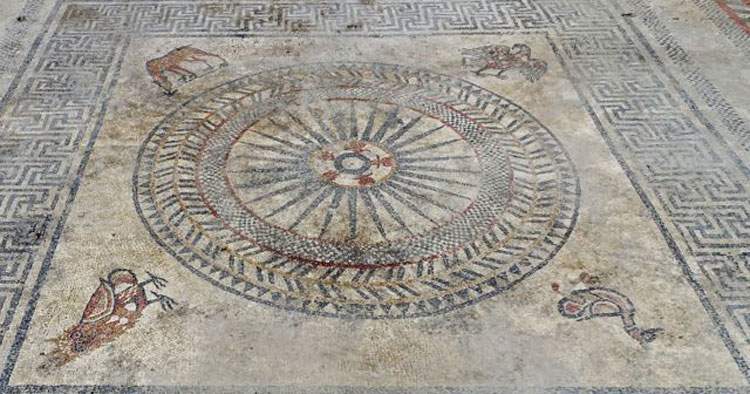Work is underway to prepare for the transfer of the large Roman mosaic from Uzès, in southern France, whose discovery dates back to 2014 (although the announcement to the public was made only a few weeks ago): begun on April 11, it will last a fortnight. The work will then be transferred to Nîmes, where it will be preserved and studied at the storage facilities of the Regional Directorate of Culture, and consideration will then be given to whether to proceed with restoration.
However, local conservation associations (“Prima Vera,” “L’Uzège,” “Uzège-Pont du Gard Durable,” and others) are mobilizing because they fear that the mosaic will not return to Uzès. The Prima Vera association, in particular, has launched a petition addressed to the president of theOccitania region, Carole Delga. “These mosaics,” the text of the petition reads, “were placed in a very specific spot, the geographic, political and cosmic center of the city. They are not a decorative carpet, but a monument, a unique testimony to the influence of Greek and Roman antiquity at the origin of our civilization and the very foundation of the city of Uzès. To take them out of their context would mean denying all the richness of our heritage and our city.” The association is therefore calling for a project to enhance the work in situ.
The region seems to have taken up the appeals: the chairwoman has let it be known that the region’s will is to have the mosaic remain in Uzès. However, said a few days ago a regional councilor, Fabrice Verdier, “it is necessary to find a suitable site, because on the current one it is difficult to accommodate visitors, and our goal will be to make sure that whoever comes to see this exceptional mosaic can do so in optimal conditions.” The compromise suggested by Verdier would be to move the mosaic twenty meters from its location. In the coming days the region will set up a consultation to decide on the restoration. However, to know what the final destination of the mosaic will be, it seems we will have to wait until September.
The mosaic in question is “one of the largest ever found in southern France,” explains Philippe Cayn, archaeologist in charge of the excavation. It has a surface area of 60 square meters and dates back to the first century before Christ, that is, to the time of Julius Caesar’s conquest of Gaul. It is in an excellent state of preservation and has fine decorations, consisting of geometric motifs and ornaments with a faunal theme.
Image from the website of the Prima Vera association
Sources: France Bleu 1 - France Bleu 2 - Metropolitain - La Marseillaise - Le Parisien
 |
| France: protests over the relocation of the great Roman mosaic |
Warning: the translation into English of the original Italian article was created using automatic tools. We undertake to review all articles, but we do not guarantee the total absence of inaccuracies in the translation due to the program. You can find the original by clicking on the ITA button. If you find any mistake,please contact us.